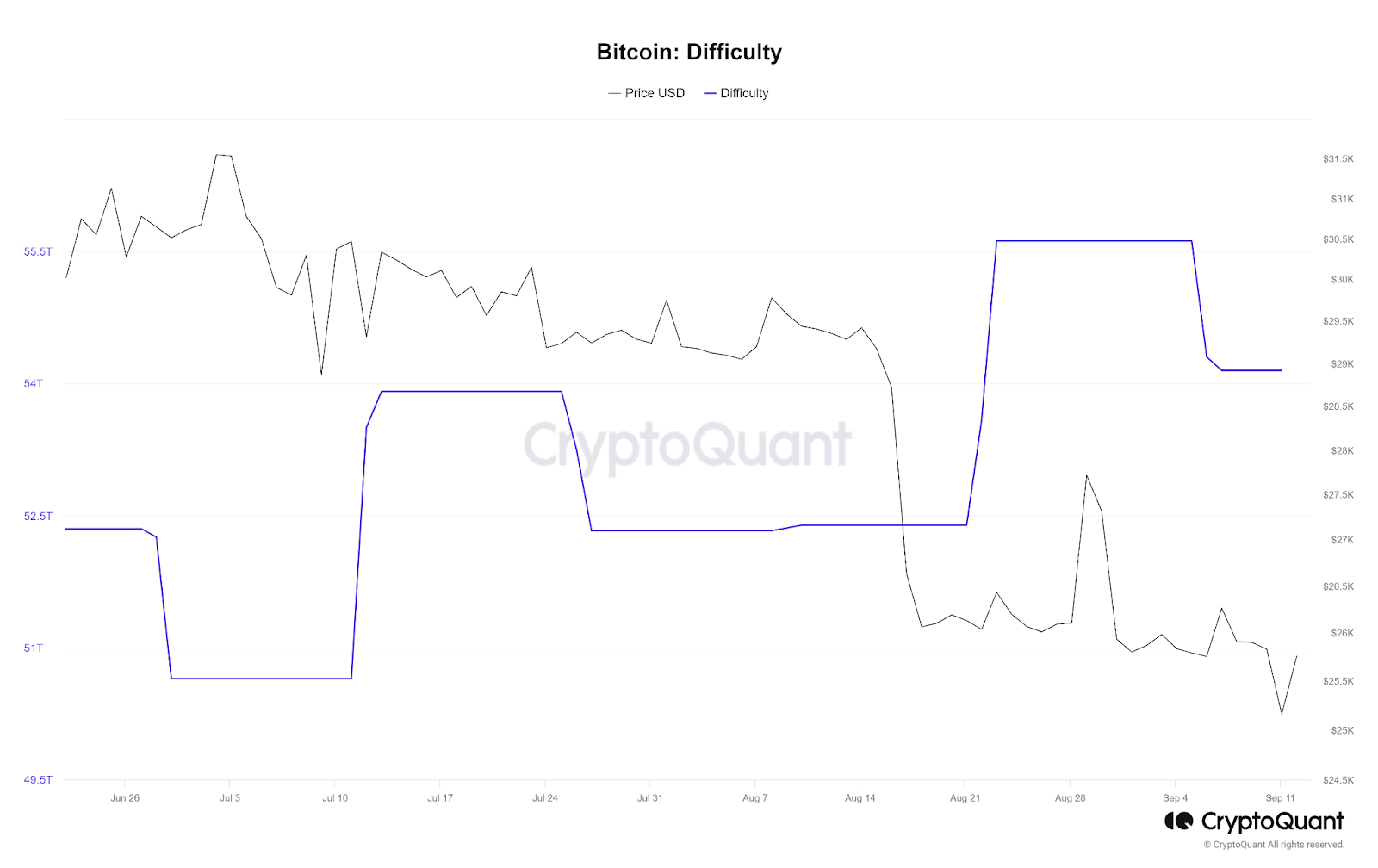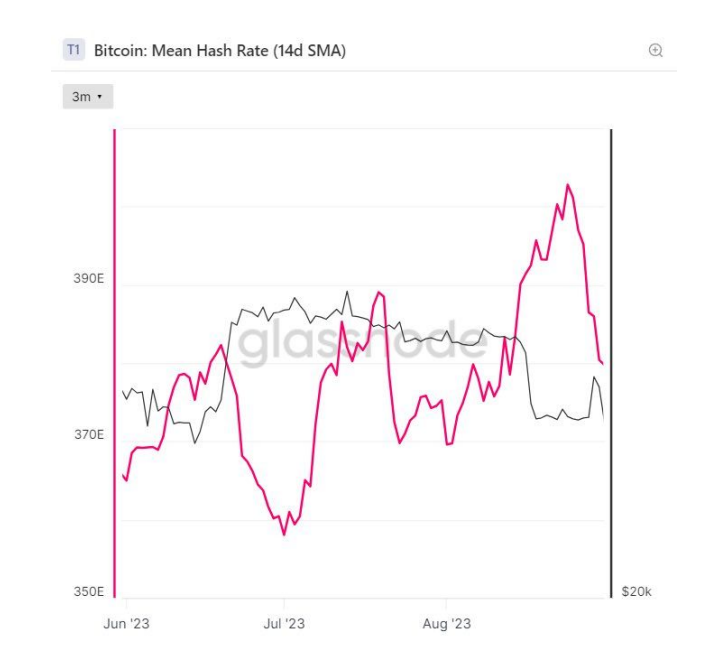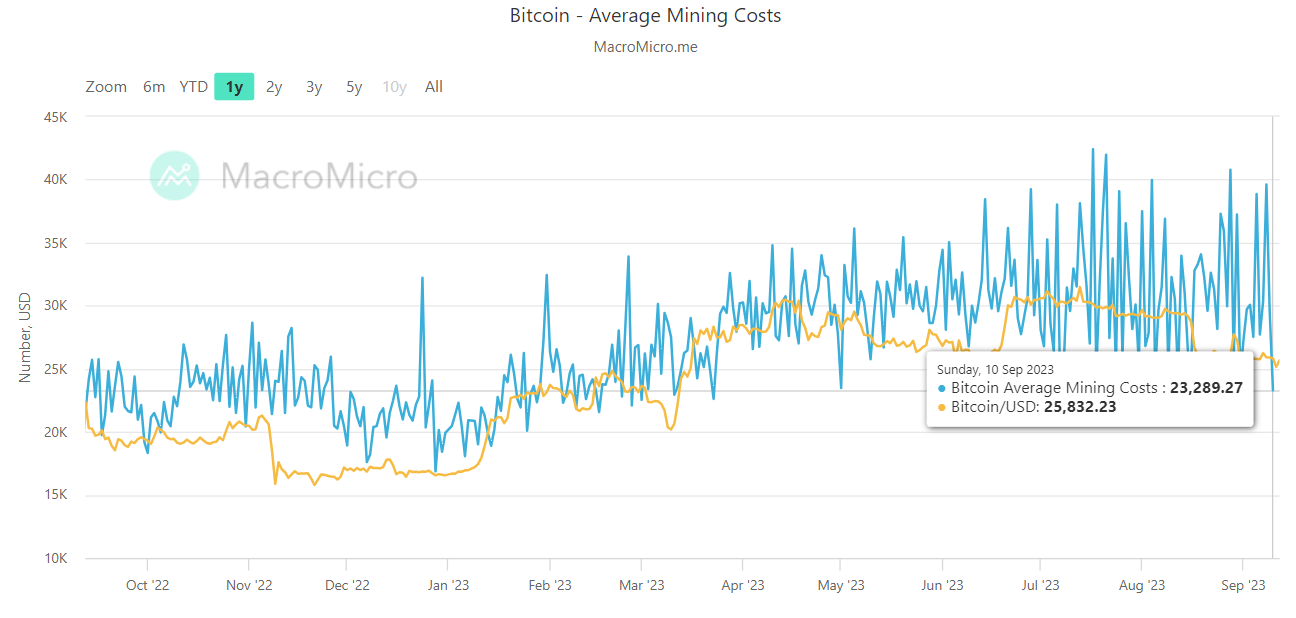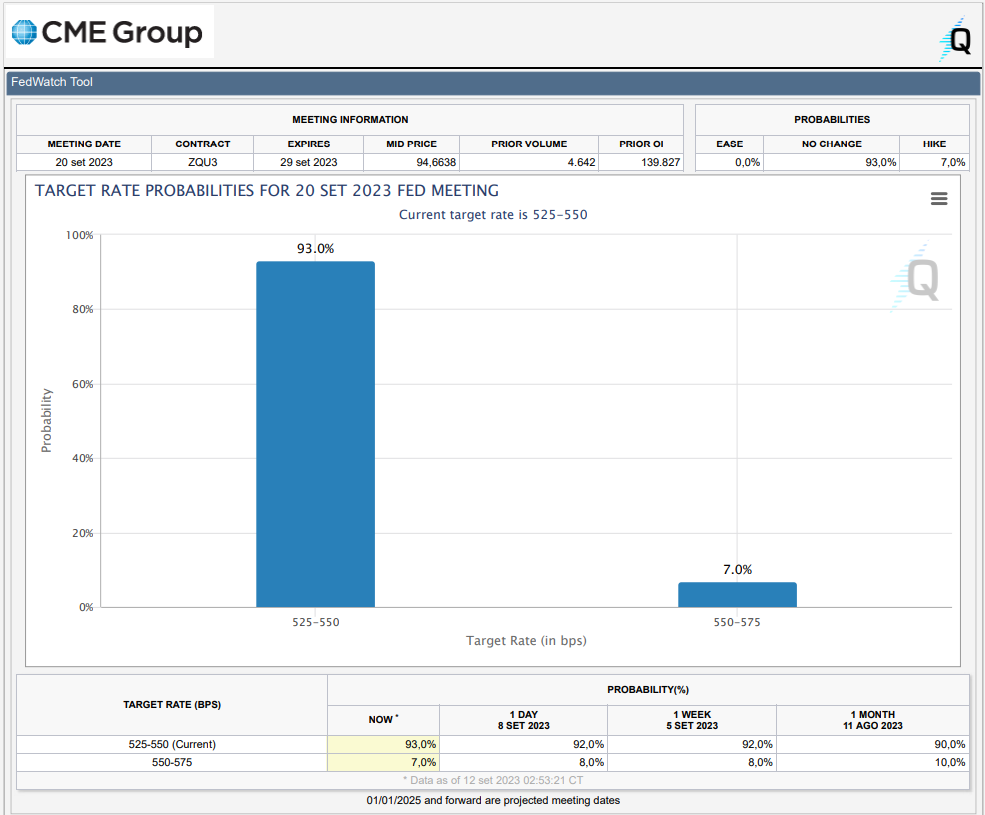In this article we are going to look at what are the most interesting on-chain metrics for Bitcoin.
As the cost to mine a BTC approaches the current market price of the cryptocurrency, the hash rate quietly drops giving way to a decrease in network difficulty.
Meanwhile, liquid Bitcoin on the markets are becoming increasingly rare, with crypto holders not giving up and jealously guarding their coins for more than a year.
Overall, the situation for Bitcoin is very complex: on-chain metrics are helping by giving us some indications for the medium term, but at the same time the US economy reflects conflicting data from each other.
Let’s look at all the details below.
Bitcoin network difficulties down after hash rate drop
Analyzing Bitcoin’s on-chain data, we quickly see that the network’s mining difficulty is declining, with the recent adjustment on 6 September resulting in a -2.65% in block resolution time.
Adjustments to network difficulty occur about every 2 weeks (more precisely, every 2016 blocks) ensuring that each block is added to the Bitcoin blockchain approximately every 10 minutes.
An increase in difficulty suggests that competition among miners is getting higher and with the overall computing power of the network growing.
Conversely, a decline in this metric indicates a decrease in miners’ presence and overall computing power declining.

Indeed, while noting that the overall trend in hash rate is extremely positive with year-on-year increases in network security, in the short term things are slightly different.
The 14-day average of this indicator shows us that at the beginning of September there was a substantial decrease in the work of miners, who contribute through their computational strength to validate transactions and ensure the perfect functioning of Bitcoin’s blockchain.

In turn, the reduction in the hash rate depends on an environment in which profitability for miners is becoming increasingly risky after the cryptocurrency’s latest depreciation.
Indeed, while Bitcoin prices recently fell below $26,000, the average cost of mining per coin has increased slightly to around $23,289.
In such a situation where the profit margin is minimal, many insiders have preferred to turn off their hardware in anticipation of better times.
Note also how these figures represent an average based on electricity costs in the US provided by Cambridge University.
If we took the rest of the world as a reference, we would observe much higher costs in some countries such as Italy and much lower costs in countries such as Lebanon.
However, it is worth mentioning here that most of the network’s computing power comes from the United States, where there are large mining companies such as Foundry USA, Riot Blockchain, Hut8 mining, Marathon Digital and Bitfarms.

Bitcoin: on-chain data show liquidity shrinking with crypto holders remaining firm on the market
While mining data is not among the most optimal, we can see how Bitcoin holders are not demurring and remain convinced of the cryptocurrency’s long-term potential.
Most of Bitcoin’s supply is indeed illiquid, ergo it has not been moved in over a year. In detail, 68.65% of the supply is in the hands of holders (or refers to lost coins that are no longer accessible due to the loss of private keys) who are simply waiting for a substantial increase in the coin’s price for the next halving.
Approximately 4.12 million BTC represent the true liquidity of the asset, where most is handled by centralized operators such as exchanges.

In such an environment, where we observe low general interest in investing in speculative assets like Bitcoin, and low liquid supply for the cryptocurrency, the risks of price manipulation are very high.
Now movements in the market are very much dependent on factors outside the logic of the crypto market such as the FED’s decisions on interest rates and the issues surrounding the approval/denial of a spot ETF for Bitcoin.
Although this is not exactly positive as the cryptocurrency price is at the mercy of various sharks, we still have to admit that the situation in the long run is getting more positive.
The fact that the short-term supply is becoming increasingly illiquid is a factor that highlights the scarcity in the digital sphere of the asset with an increasingly strong interest of bitcoiners to safely store their satoshi.
Hence, a strong accumulation is underway.

A complex picture to analyze: what to watch for in the coming weeks
The big picture for Bitcoin is becoming increasingly complex, with the on-chain data being slightly worrying for the short term and definitely more encouraging in the long term.
At the same time, all this reasoning must be placed within the logic of the US markets, which could be a total game changer, at least between now and the next 6-12 months.
The US economy is also showing mixed signals and is not helpful in coming to a clear conclusion with the growing service sector driving the country’s livelihood and inflation unfortunately still not quite under control.
Manufacturing seems to be increasing but the inventory/sales ratio has fallen to its lowest in 3 years signaling that something is not quite right.
Also of note is how the dollar is not having one of the best times in the last decade, especially considering the recent attacks with the formation of the BRICS alliance.
On the Bitcoin front, given the uncertainty that prevails in every aspect, it will be important to watch what will be the SEC’s upcoming decisions in view of the deadline for approval of BlackRock’s ETF.
Indeed, the approval of such a financial product could legitimize the asset on a more institutional level leading to a high increase in volumes and disrupting current dominance situations.
At the same time, the FED‘s upcoming FOMC mettings will be crucial in understanding what Powell has in mind for the coming months, with investors expecting a return to expansionary monetary policy by May next year.
In the meantime, for the next meeting, the odds indicate that interest rates will remain unchanged at 5.25-5.50% with only a 7% chance of a 25 basis point increase.
As long as rates remain so high, it will be difficult to see any real flow of capital, given and considering that investors prefer to invest in government bonds that give an assured and decent yield, rather than move to the uncertainty of speculative markets.
However, when and if we return to near-zero interest rates, then we could expect a sharp rise in the price of Bitcoin and the entire US equity sector.

 en.cryptonomist.ch
en.cryptonomist.ch
